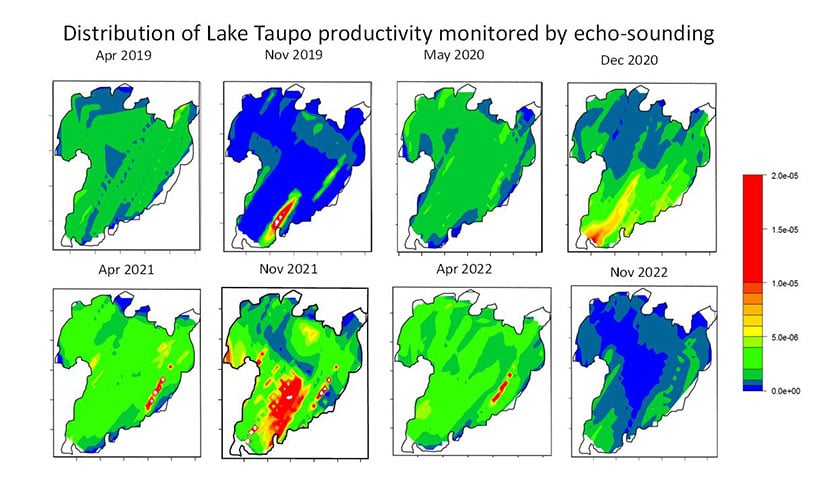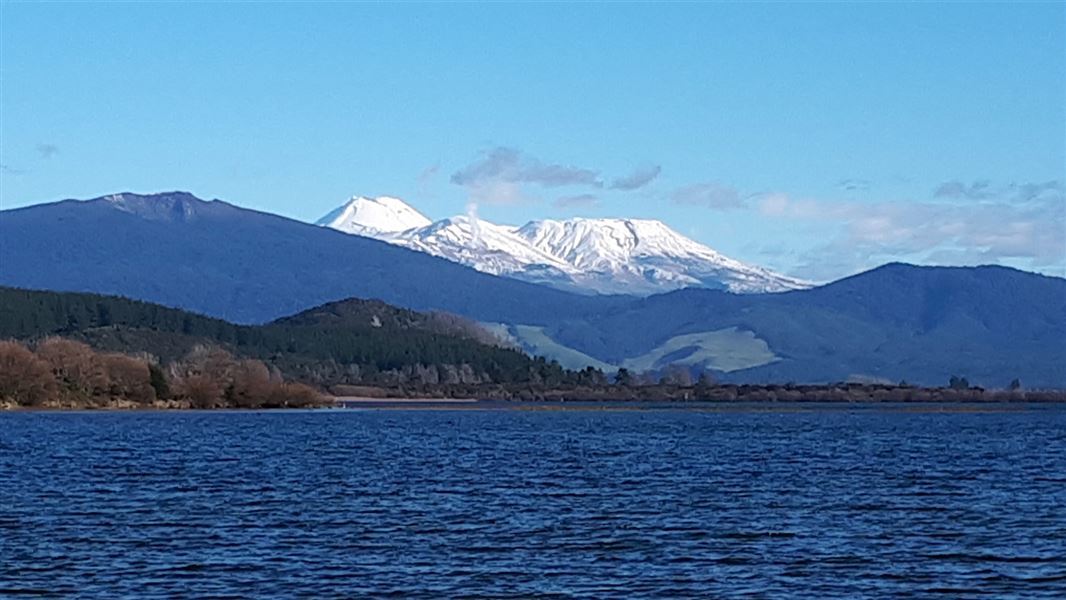Archived content: This media release was accurate on the date of publication.
Date: 15 December 2022
The condition and number of trout witnessed during the 2022 winter season was exceptional, reflecting the high productivity that existed in the lake throughout 2020 and 2021. However, the productivity this spring, especially in the northern part Lake Taupō, was relatively poor. This marks a return to the levels recorded in 2019, suggesting similar conditions for growing trout.
The illustration below shows the distribution and density of ‘back-scattering data’ which offers a highly visual representation of lake productivity information over time.

Graphs of Lake Taupō's productivity between April 2019 to November 2022.
Impact on trout
The reduced productivity witnessed this spring could affect trout at four distinct stages of their lifecycle.
For young trout entering the lake this summer, the low productivity may have a strong impact. It may increase natural mortality, so reducing the size of the cohort that will migrate up rivers to spawn in 3 years’ time.
For 2-year-old fish spending their first full year in the lake, growth rates may be reduced but natural mortality is unlikely to reduce their number.
Fish in their third year, may experience reduced growth rates and low productivity levels could affect the timing of their spawning run next winter. Trout fertility may also be impacted, and we may see a reduction in both the number and size of their eggs. These in turn may affect the recruitment of juveniles in 3-years’ time.
Finally, trout that are recovering from spawning will be negatively impacted. Lower productivity levels will make it harder for these fish to find food, which means it will take longer for them to regain condition. We can expect a higher mortality rate among these fish compared to recent years – next seasons trapping data should confirm.
Summary
The good news is this research provides both fishery managers and anglers with a valuable insight into how this wild fishery functions. We know now how quickly productivity in Lake Taupō can change. It is interesting to note, declines in productivity occur much quicker than increases.
A cautious prediction suggests the quality and numbers of trout in 2023 will be similar to 2019. They are unlikely to be as big or numerous as they were last winter.
Data Collection
Collecting lake productivity data involves towing a large specialist transducer behind a boat and recording the stream of information on a computer – a very sensitive, advanced fish-finder! The operation takes three days to complete and covers approximately 110kms. The data is collected along seven paths or transects across the lake, which remain constant from year to year - allowing scientists to make meaningful comparisons over time. A filter is then applied to the raw data which enables the team to differentiate trout, smelt and plankton.
